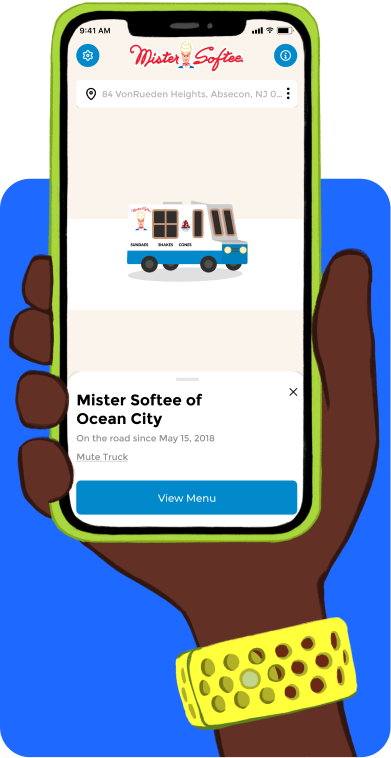Starting a new business is hard enough – you have to worry about every little detail, from the product or service you’re offering to the way you’re going to market it. Creating a website that is more user-friendly is key to marketing magic!
Your website is one of the most important tools in your arsenal, so you need to make sure it’s as user-friendly as possible. After all, if potential customers can’t figure out how to use your website, they’re not going to stick around for long.
Here are five ways you can make your startup’s website more user-friendly!
1. Make Sure That Your Website Is Simple And Effective
When it comes to website design, less is definitely more. You want potential customers and clients to be able to navigate your website easily and find the information they’re looking for without any trouble.
Of course, you want to grab and maintain the attention of those who visit your website. However, you don’t want to do this at the expense of the user experience.
Think about it. People access websites on a wide variety of devices. In fact, many countries have mobile-first cultures, meaning that a lot of the population does not access the web on desktops at all.
Even in countries like the US, where many people use desktop computers, a lot of online advertising, shopping, gaming, chatting, and app use happens on mobile. For this reason, it is important that your site translates well on a variety of devices.
Jamming it with unnecesary popups, images, long blocks of text, or poorly integrated ads makes this a lot more difficult. For this reason, it is critical that your site does exactly what it needs to do, and nothing more.
2. Make Sure Visitors Know How To Do Business With You
If someone has a question or concern about your product or service, you want them to be able to get in touch with you as quickly and easily as possible.
That means making sure your contact information is prominently displayed on your website – ideally in the header or footer – so that it’s always visible, no matter where someone is on your site.
Bonus points if you also include a contact form!
On top of this, make sure that any other information about your business is easy to find. If you have a brick-and-mortar store, for example, prominently display your hours and location.
If you have social media accounts for your startup, and you should, make sure those are made obvious on your site as well. Include calls of action inviting users to connect with you on social media too!
If people access your website and leave without knowing how to do business with you, find you digitally or in person, or contact you, that is a huge problem that can negatively impact your startup.
3. Use High-Quality Images
A picture is worth a thousand words, so you want to make sure the images on your website are high quality and relevant to what you’re selling.
If you don’t have any professional photos of your own, there are plenty of stock photo websites where you can find royalty-free images – just make sure you pick images that are on brand.
Whatever you do, avoid using generic placeholder images or poorly designed graphics at all costs.
If you are selling physical products or in a more artistic niche, the quality of your images is even more important. For example, say you are a beauty startup. This particular niche is highly visual and also incredibly saturated.
For this reason, the visual storytelling in your marketing and the look of your product photography will be critical.
However, startups of all kinds can benefit from slick and professional imagery, even if it is simple and straightforward. This sends the message that your startup is serious and trustworthy.
This can be as simple as headshots of the founding team to help give your startup a relatable human face.
4. Optimize Your Website For Search Engines
If you want people to be able to find your website easily, you need to make sure it’s optimized for search engines like Google.
One thing you can do to keep your site current and SEO optimized is to create blog content consistently. Of course, you want these posts to be SEO optimized so Google considers your site relevant and a genuine resource for people when they make searches.The key is considering how people search for things. What phrases will they type into Google? If they are using voice search, what phrases will they say? Try to build this thought process into your web content.
It might seem like a lot of work, but it’ll be worth it when people can actually find your site online!5. Don’t Forget To Test Everything Before You Launch
Last but not least, before you launch your revamped website to the world, it’s critical that you test everything – from the overall design down to the smallest details like button colors and font sizes.
Put yourself in your users’ shoes and try to navigate your site as if you’d never seen it before – if something isn’t working right or could be improved, now’s the time to fix it!
Consider letting others test your website before it launches. Take the feedback from your test users seriously. If multiple people raise the same concerns, it is woth taking those notes into consideration.
After all, it is easy to become so invested in or excited about something that we don’t think objectively or consider something from multiple angles.
Entrepreneurs are generally quite passionate people, and while this passion can move mountains, it can also get in the way of things from time to time, depending on the person.
This is why working in a collaborative environment and getting feedback from outside people is so critical for startups at every stage, not just when it comes to making a stellar website.
Also, be sure to test the site on different devices. Does it look as good on an iPad or smartphone as it does on a desktop, for example?
Are any tweaks necessary?
Make sure you know before your site goes up.
Once everything looks good from a user standpoint, then you’re ready for launch day.
Embrace Change and Think Long-term to Make your Website More User-Friendly
Keep in mind that your site will likely require long-term maintenance and maybe even bug fixes over time. Also, if your startup stands the test of time, it will likely undergo a number of rebrands.
For example, these are the changes to only Amazon’s logo over the years. It changed as the scope of their business, their services, and the general aesthetic tastes of consumers changed.

The same thing happens to almost all businesses as they grow and change with time. After all, the last thing you want in our fast-paced world is a website representing your business that looks like it’s a decade old.
This may cause potential customers and clients to question if you are trustworthy, and possibly even if your business is still operating at all.
Final Thoughts on How Startups Can Make Their Website More User Friendly
A user-friendly website is essential for any startup or business. It makes you look connected, professional, and modern. On top of that, it makes your startup searchable and easy for potential clients and customers to connect with.
These five tips will help create trust with customers and connect with the world in a smart way.
Creating a well-designed site may seem like a daunting task, but remember first impressions matter so don’t cut corners. You want the best user experience possible!
What do you think? Comment below.
Since 2009, we have helped create 400+ next-generation apps for startups, Fortune 500s, growing businesses, and non-profits from around the globe. Think Partner, Not Agency.
Find us on social at #MakeItAppn®

















